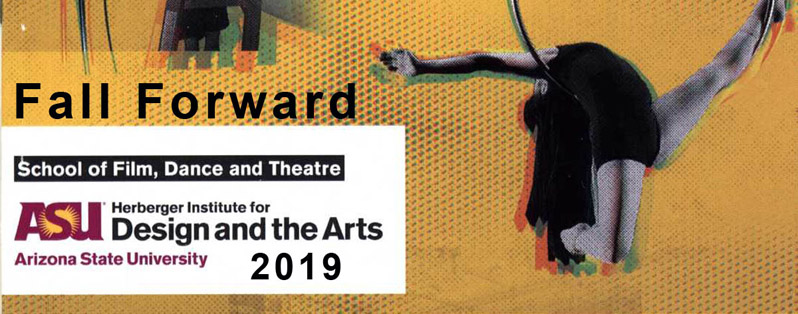Choreographer: Edson “BBoyHouse” Magana / collaborative work
Performers: Edson “BBoyHouse” Magana, Lawrence “Reflekshin” Martinez, Leah “LThrilla” Roman, X-Savior Thomas, Nick “Kannon” Villareal
You might think you know something about a person or group of people but it’s always going to be a bit superficial until you get invited in. If you’re lucky, maybe it’s to come into their house, to sit down at the table to share a meal. Maybe even just to sit down and talk. But you need to find a place of trust where people feel comfortable telling their stories, because it’s knowing a person’s story where real understanding begins. Love is the work isn’t just a dance, it’s a place. BBoyHouse has created a space where his, and his collaborator’s, stories can be told, from the heart – and has invited us in.
The set is comprised of a number of large blocks, painted with some undecipherable urban graffiti theme and there is the requisite DJ station, complete with turntables. The DJ is in place, headphones on, ready to scratch. Dancers are crouched behind various blocks, not exactly concealed from the audience. The music is overlaid with narration and we quickly come to understand that the narration is the driving force behind the performance.
Dancers are introduced in turn, appearing from behind a block to do their solo, then returning to crouch out of sight – sort of. The format is simple and repeats until each dancer has performed. It wasn’t very sophisticated but it was effective. Dancers didn’t have to stand around awkwardly as the solos progressed, and each one owned the stage and the spotlight when it was their turn to perform.
My expectations for this piece were thwarted and it took me some time to adjust. Street dance is everywhere in popular culture and I assumed we were going to see some more in-your-face competitive throwdowns. But the narrator didn’t introduce the dancers by their style or their prowess – instead, he described them by their character and their reputation in this community. As each dancer is called (by their artist name) and turns out to perform in their style, we hear them praised with descriptive terms of respect: “caregiver”, “leader”, “nurturer”, “magic maker”, “village over-looker”, “role model”. This gives us a whole new context in which to see the performer.
At the end of the performance, the blocks were assembled into a wall that presumably represented the unity of the community. It was easy to miss the significance of the last routine and it took me a while to work it out. BBoyHouse, whose voice had provided the narration for each of the dancers, took the floor himself. In a symbolic act, each of the dancers gathered around him in a show of respect – the only time they all were visible on stage simultaneously.
If some of the mechanisms in the piece seemed a little obvious, it was forgivable. They provided a formal structure that worked. What this piece lacked in sophistication, it made up for in sincerity and some real heart. It was a crowd pleaser and the last performance of the evening. Given its energy level, it would have been a hard act to follow.
Viewed Re/Viewed


Recent Comments